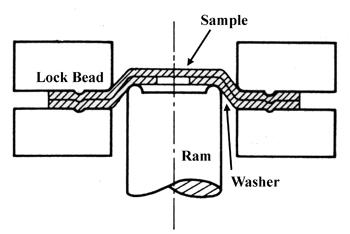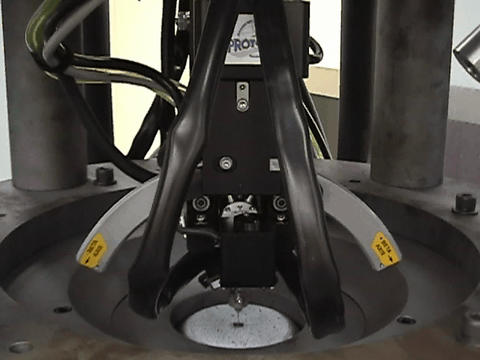Summary

A novel method for measuring multiaxial stress-strain curves in sheet metal has been designed based on a modified Marciniak punch stretching geometry. Since the sheet sample is being stretched in conjunction with a driver sheet, there are unquantifiable friction stresses between the counter slipping sheets and between the sheets and the tooling. As such, there is no way to relate the applied load to the stress in the deforming sheet. Thus, X-ray diffraction is used to measure the stress in situ in the sheet and, along with strains measured using DIC, form the multiaxial stress-strain curve. For the first time, the yield locus in the tensile principle stress quadrant can be mapped from initial yield through ultimate failure.
Description

This X-ray system can measure the full 3D stress tensor of the sheet in situ under multiaxial tension. The test is performed by raising the punch to stretch the sheet incrementally, then a hold is placed while the stress measurement is made. This step takes 2-4 minutes depending on the accuracy desired. The X-ray head is retracted and the sheet incrementally strained again, repeating the data collection cycle. The strain state is changed by varying the width of the sample, from uniaxial (narrow) through plane strain (wider) to balanced biaxial (square sheet). The stress measured on the surface is uniform through the thickness when the sample is held on the yield surface, so the surface measurement is representative of the bulk. Strains are measured using DIC, and the small black region in the center of the sample is clean metal, to allow the xray measurement.

